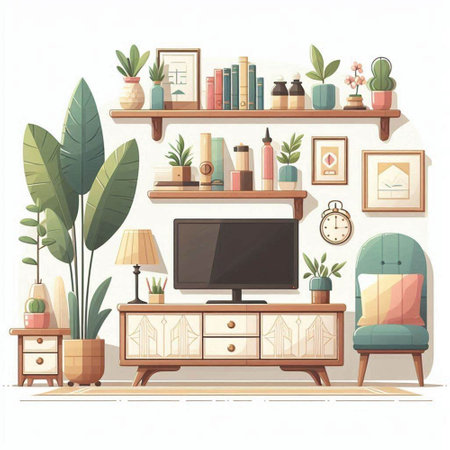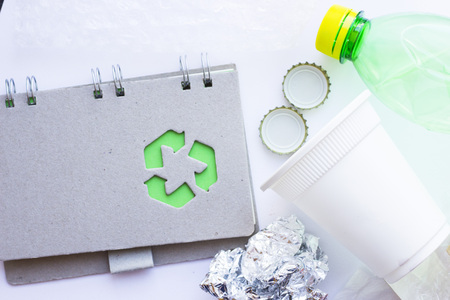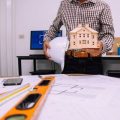Introduction to Sustainable Design Trends in Britain
In recent years, sustainability has become a core principle in British interior design. With growing awareness of environmental issues and the urgent need to reduce waste, homeowners and designers across the UK are seeking creative ways to make their interiors both stylish and eco-friendly. Embracing recycled and upcycled materials is now more than just a trend—its a movement rooted in environmental responsibility and local culture. From repurposed timber beams salvaged from old barns to vintage glass transformed into modern light fixtures, British interiors are celebrating materials with history and character while reducing their carbon footprint. This shift aligns with broader UK initiatives aimed at promoting sustainable living, supporting local artisans, and giving new life to items that might otherwise end up in landfill. As we explore the best recycled and upcycled materials for interior design in Britain, its clear that sustainability is not only good for the planet but also adds unique charm and authenticity to every home.
Popular Recycled Materials in the UK
When it comes to sustainable interior design in Britain, several recycled and upcycled materials have become mainstays due to their unique character, availability, and environmental benefits. Below is a rundown of the most commonly used options in British interiors, along with their sources and eco-friendly advantages.
| Material | Main Source | Eco-Friendly Benefits |
|---|---|---|
| Reclaimed Timber | Old barns, warehouses, railway sleepers, and local salvage yards across the UK | Saves trees, reduces landfill waste, adds historic character to homes, and minimises the carbon footprint associated with processing new wood |
| Recycled Glass | Post-consumer bottles and jars collected from British households and commercial recycling schemes | Cuts down on energy use compared to producing new glass, diverts waste from landfill, and can be crafted into stunning worktops, splashbacks, or decorative features |
| Salvaged Bricks | Demolition sites, architectural reclamation yards, or specialist suppliers throughout the UK | Preserves the embodied energy of traditional bricks, maintains the authentic look of period properties, and prevents unnecessary manufacturing emissions |
These materials not only help homeowners achieve a distinctly British aesthetic—think exposed brickwork in London flats or rustic beams in countryside cottages—but also support national efforts towards sustainability. By choosing locally sourced recycled materials, you’re reducing transportation emissions while championing British craftsmanship and heritage. Next time you’re planning a renovation or DIY project, consider how these popular choices can fit into your design while saving both money and the environment.

3. Creative Upcycling Ideas for British Homes
When it comes to infusing your home with personality and keeping costs low, upcycling everyday British items is a brilliant solution. Not only does this approach keep perfectly good materials out of the landfill, but it also gives your interiors a one-of-a-kind charm that speaks volumes about your resourcefulness and love for sustainable living. Let’s explore some inventive ways you can transform familiar objects into bespoke décor pieces with a true British twist.
Vintage Suitcases: Timeless Storage Solutions
Old suitcases aren’t just relics from the past—they’re perfect for creating quirky storage and display units. Stack two or three classic leather suitcases as a side table in your lounge, or mount them on the wall to craft open shelving with character. Add brass handles for an extra touch of nostalgia, and line the interiors with floral fabric for a subtle nod to traditional British design.
Scaffolding Boards: Rustic Shelves & Tables
Salvaged scaffolding boards are widely available across Britain, especially in urban areas undergoing renovation. These sturdy planks make exceptional floating shelves, rustic dining tables, or even benches for a boot room. Their natural wear and weathering add instant authenticity to modern and period properties alike.
| Upcycled Item | DIY Project Idea | Distinctly British Flair |
|---|---|---|
| Vintage Suitcase | Stacked Side Table | Floral lining & brass hardware |
| Scaffolding Board | Dining Table or Bookshelf | Natural patina & chunky brackets |
| Old Door | Headboard or Coffee Table | Peg hooks, period paint colours |
| Mason Jars (Jam Jars) | Pendant Lights or Planters | Copper fittings & wildflowers |
| Belfast Sink | Laundry Room Basin or Garden Planter | Cottagecore aesthetic |
Old Doors: Statement Headboards & Coffee Tables
If you come across a discarded wooden door—especially those featuring traditional panelling—don’t pass it by! With a bit of sanding and paint in heritage shades like Farrow & Ball’s “Railings” or “Hague Blue”, you can turn it into a striking headboard or coffee table. Add peg hooks along the bottom edge to create practical hallway storage with vintage appeal.
Top Tips for Successful Upcycling in Britain:
- Source materials at local car boot sales, charity shops, and online marketplaces like Gumtree or Facebook Marketplace.
- Choose period-appropriate finishes to maintain harmony with British architectural styles—think muted paints, antique brass, and botanical fabrics.
- Mix old and new elements for an eclectic look that feels intentional rather than cluttered.
- Add finishing touches such as bunting, tartan throws, or hand-embroidered cushions to celebrate regional identities from Cornwall to Scotland.
By reimagining everyday objects through creative upcycling, you’ll not only save money but also curate a home filled with stories and unmistakable British character—all while treading lightly on the planet.
4. Sourcing Eco-friendly Materials Locally
If you’re looking to embrace sustainable interior design in Britain, sourcing recycled and upcycled materials locally is both eco-conscious and budget-savvy. The UK is rich with resources for finding unique and affordable pieces that add character to your home while reducing waste. Here are some practical tips and go-to places for tracking down these materials:
Charity Shops
British charity shops like Oxfam, British Heart Foundation, and Sue Ryder are treasure troves for preloved furniture, textiles, and decorative items. Not only can you find quirky one-offs, but you’ll also be supporting good causes within your community.
Salvage Yards and Architectural Reclamation
For those after authentic vintage fixtures or reclaimed wood, salvage yards offer everything from Victorian tiles to Georgian doors. Local reclamation businesses often specialise in period materials perfect for restoring or adding character to your space.
Popular Salvage Yards Across the UK
| Name | Location | Specialities |
|---|---|---|
| Lassco | London & Oxfordshire | Architectural salvage, lighting, ironmongery |
| The Old Bath House | Bristol | Reclaimed timber, fireplaces, windows |
| Wells Reclamation Co. | Somerset | Garden features, bricks, antique flooring |
Online British Marketplaces
The internet makes it easier than ever to source recycled and upcycled materials without leaving your sofa. UK-based platforms are brimming with bargains and hidden gems. Here’s a handy comparison:
| Marketplace | Main Offerings | Top Tip for Buyers |
|---|---|---|
| Gumtree UK | Furniture, building materials, decor items | Filter by local area to save on delivery costs |
| Facebook Marketplace UK | All sorts: from garden slabs to kitchen cabinets | Join local groups for first dibs on new listings |
| eBay UK (Preloved) | Vintage finds, reclaimed hardware & fixtures | Look for ‘Collection Only’ deals near your postcode |
| Freecycle & Freegle UK | Completely free items being rehomed locally | Act fast – desirable items go quickly! |
DIY Tips for Sustainable Sourcing:
- Befriend your local charity shop staff: Let them know what you’re after; they may put aside suitable items for you.
- Trawl car boot sales and jumble sales: Perfect for picking up small furnishings at rock-bottom prices.
- Check community noticeboards: Many towns have online boards or Facebook groups where locals list surplus building supplies and homewares.
Sourcing recycled and upcycled materials in the UK is not only kind to the planet but often leads to discovering unique pieces that tell a story—making your interiors truly one-of-a-kind while keeping costs low.
5. Inspiring British Case Studies
Britain is bursting with creative minds who have transformed their spaces using recycled and upcycled materials. These real-life examples not only highlight the potential for unique, stylish interiors but also underline the positive environmental impact of such choices.
Eco-Friendly London Flat: Pallet Perfection
A young couple in Hackney revamped their entire living room using discarded pallets sourced from local markets. They sanded, treated, and assembled these into a bespoke coffee table and wall shelving unit, creating an industrial-chic look while saving money and reducing waste. Their project demonstrates how accessible materials can result in high-end aesthetics with minimal spend.
Table: Key Features of the London Flat Upcycle Project
| Material | Source | End Use | Budget Impact |
|---|---|---|---|
| Pallet Wood | Local Market Waste | Coffee Table & Shelves | £0 (free materials) |
| Old Paint Tins | Shed Clear-Out | Accent Finishes | £0 (repurposed) |
Bristol’s Boutique Café: Bottle Brilliance
A popular Bristol café has made headlines by turning hundreds of glass bottles into stunning pendant lights and partition walls. Working with a local upcycling artist, they collected bottles from the community, cleaned, cut, and wired them to create vibrant focal points that spark conversation among customers. This approach not only diverted glass from landfill but also gave the café a truly one-of-a-kind identity.
Table: Environmental Impact at Bristol Café
| Upcycled Item | No. of Bottles Reused | CO2 Saved* |
|---|---|---|
| Pendant Lights & Walls | 500+ | ~125kg CO2** |
| *Estimates based on average emissions per bottle recycled **Source: UK Government Waste Data 2023 |
||
The Yorkshire Barn Conversion: Salvage Chic
An ambitious barn conversion near Leeds showcases British salvage ingenuity. The owners sourced reclaimed timber beams from a demolished Victorian school, repurposed quarry tiles from a local reclamation yard for flooring, and installed doors recovered from old churches. These historic touches add warmth and character, while supporting the circular economy and slashing renovation costs by half compared to new materials.
Why British Upcycling Makes Sense:
- Keeps materials in use longer, reducing landfill and carbon footprint.
- Saves money on both materials and disposal fees.
- Adds local heritage and personality to your space.
- Supports UK-based small businesses and craftspeople.
These British case studies prove that recycled and upcycled interior design is not just environmentally savvy—it’s stylish, affordable, and deeply rooted in local culture. Whether you’re furnishing a flat or fitting out a business, there’s no shortage of homegrown inspiration to help you get started on your own sustainable DIY journey.
6. DIY Projects: Step-by-Step on a Budget
If you’re looking to refresh your home while keeping costs down, these simple DIY projects use recycled and upcycled materials that are easy to source across Britain. Below, you’ll find step-by-step guides, clever money-saving tips, and the best places to hunt for supplies locally.
Upcycled Pallet Coffee Table
Supplies Needed:
| Item | Where to Find in the UK | Approximate Cost |
|---|---|---|
| Pallets (1-2) | Gumtree, local businesses, Facebook Marketplace | Free – £10 each |
| Sandpaper or Sander | B&Q, Wickes, Toolstation | £3 – £15 |
| Wood stain or paint (eco-friendly) | The Range, Wilko, Screwfix | £5 – £12 |
| Castor wheels (optional) | IKEA, Amazon UK, eBay | £8 – £15 set of 4 |
How-To:
- Find a pallet: Ask local shops or builders’ merchants if they have any spare.
- Sand it down: Smooth rough edges for a polished finish.
- Add wheels (optional): Screw castors underneath for mobility.
- Stain or paint: Use eco-friendly finishes for a British rustic look.
- Style it up: Add magazines, baskets or trays for a homely touch.
Bottle Vase Cluster for the Mantelpiece
- Collect glass bottles: Save wine, gin or cordial bottles—British brands add charm!
- Sterilise and remove labels: Soak in warm water with bicarbonate of soda.
- Add seasonal flowers: Pick wildflowers or visit a local market for budget blooms.
- Arrange in clusters: Mix bottle heights and colours for an eclectic British cottage vibe.
Savings Tips & Local Hacks
- Trawl charity shops (Oxfam, British Heart Foundation): Perfect for finding unique furniture and décor to upcycle at bargain prices.
- Council recycling centres (“tips”): Many offer reusable items sections where you can snag timber offcuts, doors or tiles for pennies.
- Loyalty cards: Sign up at B&Q, Wickes or Homebase for discounts and exclusive deals on tools and paints.
- Bristol Wood Recycling Project and London Re-use Network: Both are brilliant sources of affordable reclaimed materials.
Your Budget-Friendly British DIY Checklist:
| Project Idea | Main Material Source | Savings Potential (£) |
|---|---|---|
| Pallet Table | Pallets from local businesses/online classifieds | 50+ |
| Bottle Vases | Saves from household recycling bin/local pubs/restaurants | 10+ |
| Mosaic Mirror Frame (using broken tiles) | Council tip/Freecycle/Gumtree giveaways | 30+ |
Tapping into Britain’s rich culture of thrift and creativity means your next interior design refresh can be as sustainable as it is stylish—all while keeping your wallet happy!
7. Conclusion: Sustainable Living for the Future
Embracing recycled and upcycled materials in interior design is more than just a passing trend—its an essential step towards a greener, more sustainable Britain. By integrating these eco-friendly options into our homes, we not only reduce landfill waste and lower our carbon footprint, but also support local craftspeople and give new life to materials that would otherwise be discarded. This approach aligns perfectly with British values of resourcefulness, creativity, and community spirit.
Key Benefits of Recycled & Upcycled Materials
| Benefit | Description |
|---|---|
| Cost-effective | Often less expensive than buying new materials, helping you save on your home projects. |
| Unique Character | Every piece tells a story, adding charm and personality to your interiors. |
| Eco-Friendly | Reduces demand for new resources and cuts down on waste sent to UK landfills. |
| Supports Local Businesses | Encourages the growth of British makers who specialise in reclaimed and upcycled goods. |
| Customisable | Easily adapted or DIYed to fit your personal style and space requirements. |
Your Eco-Friendly Design Journey Starts Here
If youre looking to refresh your living space without breaking the bank or harming the environment, now is the perfect time to try recycled and upcycled materials. Start small—perhaps with vintage wooden shelves from a local charity shop or a DIY pallet coffee table. Every sustainable choice you make helps to protect Britain’s beautiful landscapes for future generations. Remember, every little bit counts. Let your home reflect not just your taste, but also your commitment to a brighter, greener tomorrow.


